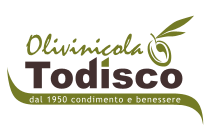Putignano - Tourism, history, food and wine, art and culture.
Bright colors typical of majolica that draw imposing frames of intense green foliage with the presence of flowers and quince. There are baskets full of colorful fruit, representations of typical 1700s vases with hanging flowers and buds, combined with an enchanting and colorful bird of paradise. The artistic representation of the Neapolitan school is presented with bright colors, sinuous brushstrokes of cobalt blue, copper green, blue, yellow and blue.
At the center of the entire walkable surface, in a blue cartouche decorated on the top with a crown of yellow-ocher flowers and green leaves, there is the date MDCCLI, 1751.
The overall size of the pavement is approximately eight by four meters deep, and the overall project consists of square tiles of approximately 11 cm per side.
Fortunately, the scarce trampling of the flooring given the scarce use of the altar, as it is placed high up on an upper level immediately above the main altar, reachable only through two long stairs placed on the sides, has preserved the state of conservation of the same.
The one visible in the church of Santa Maria La Greca is the only ancient majolica floor present in the ancient village, and with good reason it can be considered that it is the second in Puglia, in this regard it is worth mentioning that of the church of San Giacomo in Piazza of Odegitria in Bari
 This website project born from the idea of Gianni Musaio is enclosed in a team spirit and is the result of the collaboration of people, ordinary citizens, who care about the historical, cultural, artistic, geographical, food and wine heritage of the historic center of Putignano, a town in to live.
This website project born from the idea of Gianni Musaio is enclosed in a team spirit and is the result of the collaboration of people, ordinary citizens, who care about the historical, cultural, artistic, geographical, food and wine heritage of the historic center of Putignano, a town in to live.

The historic center of a town is the fulcrum of the territory, where ancient stories, traditions and culture of those who preceded us are preserved. You too can contribute to leaving the testimonies of the past to the generations to come, taking care of them.



















